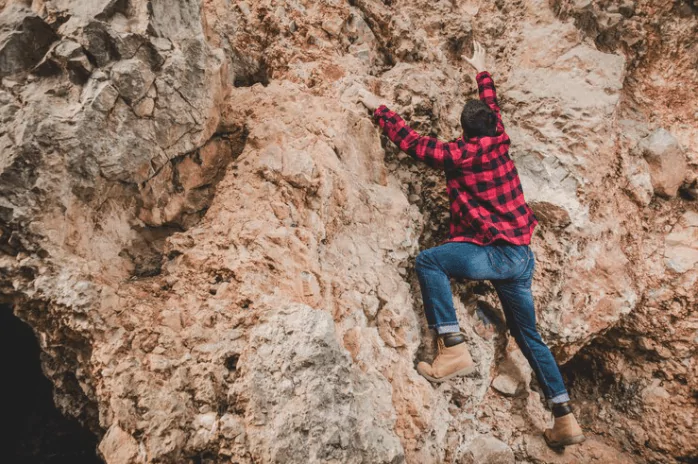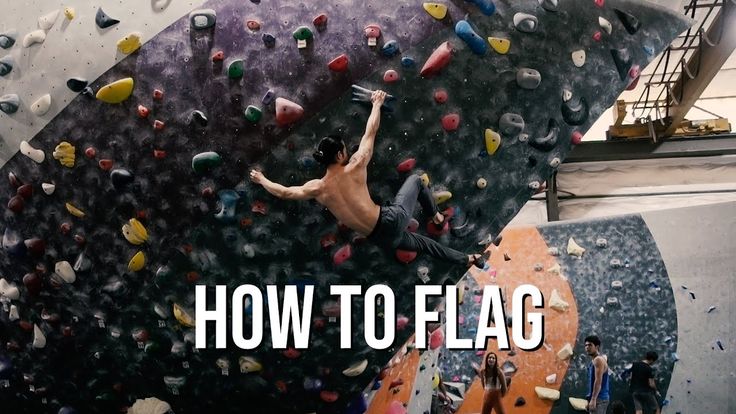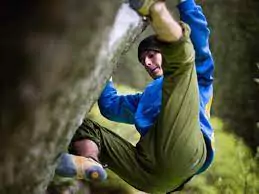The 16 Best Climbing Harnesses of 2024
Whether you’re a strong boxer in the gym, clocking a 5.14 or climbing Cerro Torre in Patagonia, you’ll need the best saddle for the job. In addition to being an integral part of every mountaineer’s safety, seat belts offer different levels of comfort, fit, adjustability and weight. The following selection of the best climbing gear for 2024 features the best models for all disciplines, including sport, trad, big wall and mountaineering. For more general information, please see the comparison table and purchasing tips below the selected options.
Best All Round Climbing Harness
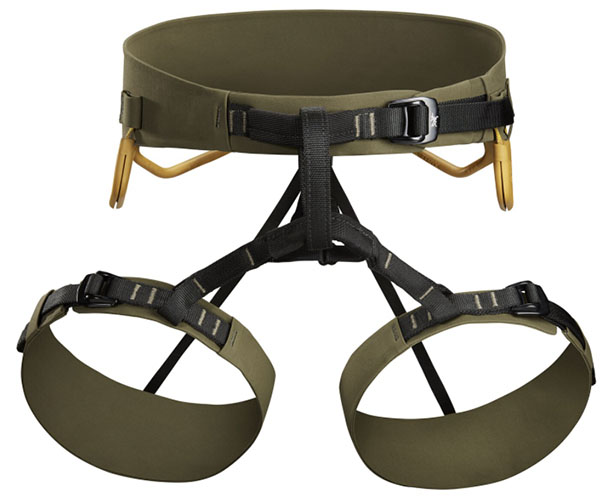
1. Arc’teryx AR-395a
best use: Trad, Alpine
Weight: 13.9 oz.
What we like: Very comfortable and thin; Exceptional design.
What we don’t like: Expensive.
Arc’teryx, based in British Columbia, is no stranger to climbing harnesses. In fact, these saddles were the first product developed and sold in the late 1980s. We have been using various versions of the AR-395a for over 10 years and have yet to find a better tool for the job. The wide waistband and split waistband provide incredible comfort without adding a lot of foam, the adjustable hip loops allow you to tailor the garment to different body sizes and layers, and the feature set leaves nothing to be desired with four closure mechanisms soft. loops. Buckle, four ice slots and easily removable elastic straps on the back. For serious climbers who want a harness they can take to the crag, the mountains, and even the gym, the Arc’teryx AR-395a is our top pick.
Praise aside, the AR-395a is not for everyone. If you’re installing the system primarily in hills, you’ll probably like a simpler design like the Black Diamond solution below. Finally, the price is undoubtedly high: for 160 dollars you can buy two beginner belts, enough for novice climbers. But if you’re willing to invest the money, the AR-395a is a durable, comfortable, and feature-rich harness for everything from rock climbing to mountaineering, and we’ve found that its smooth fabric holds up well over time. Behind it are countless cracks and chimneys. Note. Arc’teryx also makes the C-Quence ($145), which has stable legs and mesh for ventilation, and the mid-range Konseal ($130).
A Close Second
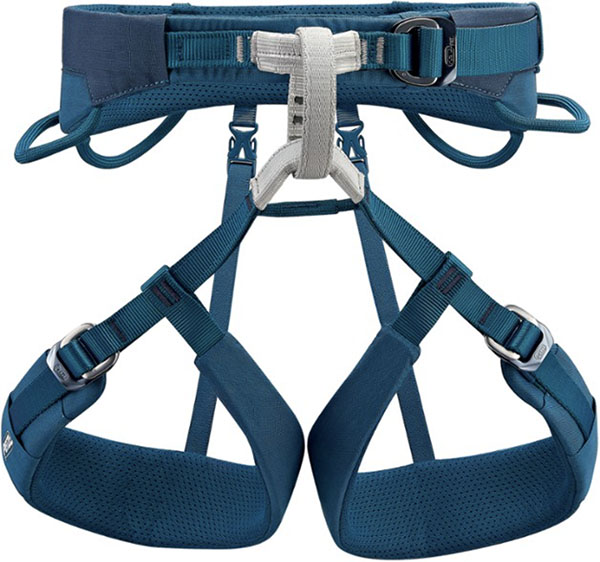
2. Petzel Ajama
Petzl Adjama climbing belt, application: traditional, sport.
Weight: 1 lb 1.1 oz.
What we like: A versatile strap that offers great comfort and build quality.
What we don’t like: Heavy and a little bulky; Access to the rear trunks is difficult.
The Arc’teryx AR-395a is a tough sell, but Petzl’s Adjama (and Luna for women) are great alternatives for $70 less. This saddle can do it all, from comfortable riding on rocks to gym climbs and long multi-pitch routes. Like many modern climbing harnesses, the Adjama uses a combination of soft foam and split straps to distribute the load, and features adjustable leg loops to fit a wide range of body shapes (we found them almost a must-have for muscular legs) . . While many harnesses only have four gear loops, the Adjama has five, plus a loop attached to the back to hold gear.
The Adjama is larger and heavier than many of the saddles offered here, although this wouldn’t be a big deal for gym climbing (it’s been our favorite saddle for years). Plus, the extra weight provides greater durability and comfort. Dedicated professional climbers with more support might consider the Arc’teryx AR-395a above or the Black Diamond Technician below. The BD solution is designed specifically for sport climbing, but the Adjama is still a great all-terrain option. I’m looking for a universal team. Finally, Petzl also offers the Sama and Selena ($80), which are nearly identical to the Adjama and Luna but have fixed leg rings and four serrated rings.
Best Sport Climbing Harness
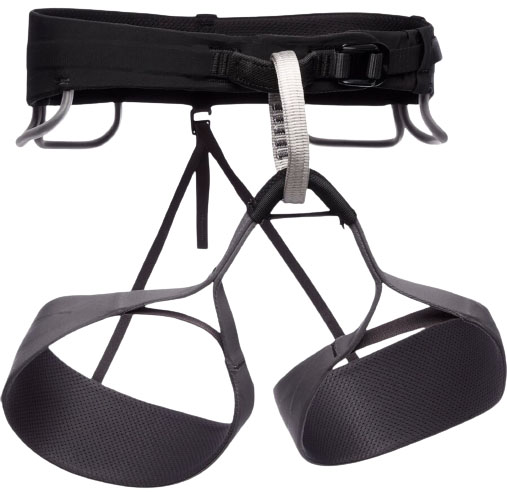
3. Black Diamond Solution
Best Use: Sports
Weight: 11.6 oz.
What we like: The stylized, ergonomic design is ideal for sporting activities.
What we don’t do: little stars; The legs are not adjustable.
Black Diamond Solution is a great example of how less is more. The belt weighs just over 11 ounces and features non-adjustable leg loops, four equipment loops, a sleek foam construction, and a split strap. That’s why it’s one of our favorite pieces of equipment for sport climbers who don’t need to carry a lot of gear or change the layering system. Despite its light weight, we found that the combination of foam and three separate strands of flat straps provides excellent load distribution and comfort. In fact, the solution is closer in aesthetics and functionality to the Arc’teryx design, but at a much lower price.
What are the disadvantages of this belt? The solution is somewhat mountain-specific: It doesn’t have an approved tow loop or adjustable leg straps, and there are no snow-cutting attachment points (if you’re looking for these features, check out the tech below). The gear loops aren’t particularly large either – you can use this strap on a multi-pitch route, but it’s not ideal. Despite its shortcomings, the comfort, appearance and simplicity of the solution make it the best option for sport climbing. At an affordable price of $80, it is also a great tool for beginners and the gym. For experienced climbers, Black Diamond also offers the Solution Guide ($100), which uses stronger material, larger chainrings and a fifth ring on the back that can accommodate a water bottle, windbreaker, boots, etc.
Best Budget Climbing Harness

4. Camp Energy CR-3
Best use: beginner
Weight: 13.2 oz.
What we like: A very affordable yet well-designed belt.
What we don’t: Heavy weight and padding add up over time.
It’s easy to spend more than $200 on climbing gear, but novice climbers or those who only go out occasionally can save a lot of money by choosing a basic model. Camp Energy CR-3 (and Women’s Energy Nova) is our favorite budget option, starting at just $50 on the ground floor, which is $15 cheaper than any other belt here. You get a relatively standard soft case with four sprockets, a tow ring, and removable rear arms for easy use in the bathroom. Ultimately, this is a reliable option that gives you the same level of security as more expensive alternatives.
The CR-3 comes with adjustable leg straps, but if you prefer a more comfortable fit, you can opt for the Energy fixed leg straps. And while we have a lot of experience with camping gear (like the Alpine Flash below), it’s important to remember the limitations of cheap harnesses: CR-3 padding shrinks over time, reducing the comfort of the harness fabric. the front does not resist abrasion well. It also weighs 2.5 ounces more than the Momentum below, which isn’t ideal for multi-pitch or alpine climbs. But for beginners or casual climbers hitting the gym or bouldering, the Camp Beginner saddle is a great choice and will get the job done.
Best Ultralight Climbing Harness
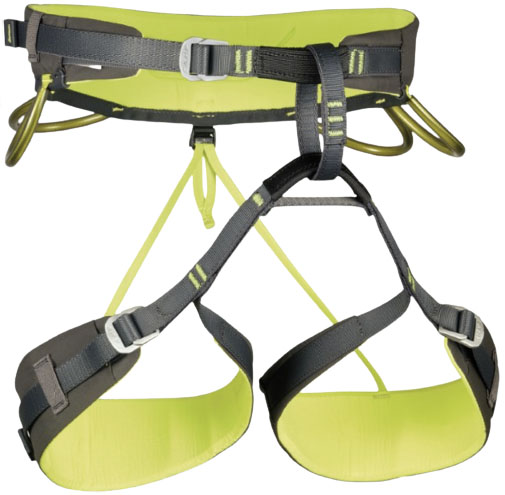
5. Petzl Sitta
Petzl Silk climbing belt. Field of application: mountain tourism, sports.
Weight: 9.5 oz.
What we like: Lightweight, but with Petzl’s signature design.
What it’s not: More expensive than the previous Arc’teryx, but not as versatile.
The Sitta was originally conceived as an ultra-lightweight tool for mountaineering and mountaineering, but was quickly adopted by elite sport climbers looking for something light and stylish for challenging climbs. At first glance, you may wonder how such a lightweight belt can provide enough support and comfort. The answer: Frame Technology, a Petzl innovation that uses parallel threads of a strong and light spectrum to distribute the load across the lower back and legs. As a result, Seta offers durability and comfort without the bulk and weight of foam padding.
Keep in mind that the Sitta isn’t as versatile as some of the other models on this list due to the non-adjustable leg loops and simple gear loops. However, for mountaineering and sport climbing, this is one of the best tools money can buy. Weighing just 9.5 ounces (4.4 ounces less than the previous AR-395a), it’s surprisingly light, surprisingly comfortable, and features handy details like separate gear wheels and height-adjustable leg straps. On the other hand, Sitta is quite expensive ($200) and is not the best option in terms of ease of hanging covers. Also worth a look in this category are the Black Diamond Vision (7.9 ounces; $175) and the Camp Alpine Flash below, which is a bit heavier (10.6 ounces) but offers significant savings for just $80.
Best of the Rest

6. Black Diamond Momentum
Best Use: Beginners.
Weight: 10.7 oz.
What we like: One of the most affordable tools on the market.
What we don’t: Sacrifice quality and comfort for price.
The Black Diamond Momentum belt isn’t the most expensive, state-of-the-art, or comfortable on this list, but it does stand itself in one very important regard: price. For just $65, you get a well-made belt that’s quite durable and comes in various sizes (six for men and five for women). Featuring TrakFit leg adjusters for easy adjustment and a rear tension loop, the Momentum is versatile enough to be worn indoors or out, for athletic or business purposes. Additionally, the new version is over a gram lighter than the previous version, making it lighter than all but a few other straps. After all, there’s a good reason why Momentum has long been a favorite among aspiring climbers of all disciplines.
You can save $15 by choosing the Camp Energy CR-3 mentioned above, but it’s significantly heavier and bulkier. Meanwhile, for those who don’t plan on spending a lot of time in the air, the Black Diamonds Solution ($80) offers a slimmer fit and finish that improves freedom of movement for novice sport climbers. As with all foam belts, you can expect the Momentum’s padding to deteriorate over time, and we found that the fabric has probably seen more wear and tear than most (chimney climbers beware). But it’s a functional and practical device for $65, making the Momentum one of our top picks for people on a budget.
7. Camp Alpine Flash

Commercial use.
Weight: 10.6 oz.
What we like: Versatile, lightweight device that costs $120 less than the aforementioned Petzl Sitta.
What we don’t like: The adjustable leg loops may feel heavy to some.
The Camp Alpine Flash strap follows in the footsteps of the Petzl Sitta ultralight. With minimal padding and a streamlined 10.6-ounce design, the Alpine Flash is designed for weight-constrained mountain operations. Snow plow slots and adjustable leg loops provide convenience for year-round use, plus five gear loops for inner tubes, winches and more. But the real selling point here is comfort: despite its minimalist design, the Alpine Flash manages to remain incredibly comfortable and easy to use. The result is an excellent versatile belt that can do double duty both in the mountains and on rock.
Like the Petzl Sitta above, the Alpine Flash has adjustable legs, but weighs just over 30g. While some (especially sport climbers) might appreciate the streamlined design of the fixed leg loops, we like the ability to adjust them depending on the level (leg loops). The Alpine Flash is also completely loose so can be worn with crampons or skis. ). Of course, it’s hard to beat the Petzl’s build quality and finish, but the Camp is on par in terms of features and costs less than $120.
8. Misty Mountain Cadillac
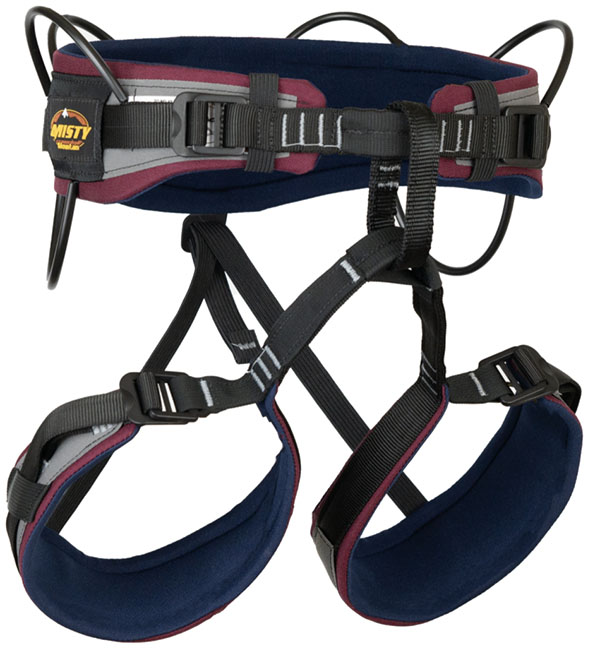
Best Use: Trans
Weight: 1 lb 3 oz.
What we like: Beautifully crafted, comfortable, and handcrafted in the USA.
What we don’t: Inherited characteristics and weight.
If Black Diamond represents the high-end alpine culture of its hometown of Salt Lake City, then Misty Mountain is what Western North Carolina represents: unglamorous, low-key and totally legal. This small company has been making and hand-sewing climbing equipment for over 30 years. If you support local businesses and artisans, Misty Mountain is your best bet (see our in-depth company analysis). The Cadillac is their most popular tool and you will immediately notice that it is not lightweight, collapsible, the buckles are heavy and they do not come in bright colors. That said, it’s as comfortable as any on our list, extremely well designed, and offers all the features we’d expect from a standard harness or climbing aid.
The Cadillac is built for daily use on the granite rock domes of North Carolina: six gear loops make it ideal for multi-stage suspension, and the padding provides maximum comfort when hung on bridges and sidewalks. The harnesses are surprisingly flexible and offer more range of motion than some of the softer devices on our list (like the Long Haul below). However, the Cadillac is heavier and bulkier than most sport or mountain models, and we don’t recommend it for heavy drilling or mountain travel. It’s also worth noting that Misty Mountain customizes the harness by adding extra carabiners or loops, including snow cutting slots, and adjusting the size of the legs and waist. Whatever idea you have, they will listen to it.
9. Black Diamond Technician
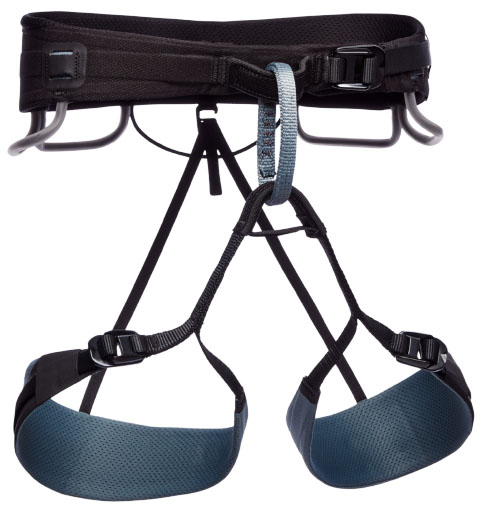
Best use: Cruiser, Alpine.
Weight: 13.3 oz.
What we like: BD’s versatile harness for mountaineers and climbers.
What we don’t like: $10 more than the Camp Alpine Flash mentioned above.
Technical harnesses are Black Diamond’s cutting-edge offering for professional climbers and serious mountaineers looking to transition from one season to the next. It uses the same foam construction and split straps as the popular BD solution (above), but also features snow plows and adjustable leg straps for added versatility. Compared to the top-of-the-line Arc’teryx AR-395a belt (another great all-weather belt), the Technician is slightly lighter and costs $70 less.
However, we found room for improvement with the coach. The most noticeable is that the stringers are slightly more aerodynamic, resulting in less suspension comfort than the previous AR-395a or Adjama. Additionally, the gear loops are relatively small and the technical fabric isn’t as durable as other industry-specific straps (including Black Diamond’s Ultra-Durable Superfabric Solutions Guide). Finally, you can reduce weight by using a belt like the Camp Alpine Flash belt mentioned above. But for general climbers who might benefit from adjustable leg straps, the Technician is a good option from BD for just $90. The belt is also available with a Recco reflector for $100, which increases the likelihood of being found in case of accident.
10. Edelrid Helio

best use: cruising, mountaineering.
Weight: 15.5 oz.
What we like: Smart design and great comfort.
What we don’t do: Expensive and relatively difficult.
Helio (Helio for Women) is a premium belt from Edelrid with a highly ergonomic design that offers performance and comfort with a relatively low weight. Almost everything in this harness has been thoughtfully designed, from the streamlined buckle to the elastic carabiner (great for packing), the streamlined waistbelt and the easy-release bungee on the back. Five sprockets and four snow plow slots make the Helio fully functional for year-round use. It also features a removable pouch ideal for storing keys, extension cords or travel accessories.
Edelrid has gone to great lengths to keep the Helium’s weight low, as evidenced by the minimalist buckles (20mm at the waist and 15mm at the legs) and the butterfly waist that tapers at the lower back and along the entire length of the life. kidneys for maximum suspension comfort. However, at 15.5 ounces, it is still one of the heaviest saddles on the market. Additionally, both the Helio and Helia are only available in three sizes, which falls outside the range offered by models like the Black Diamond Solution (available in six sizes for men and five for women). There’s no denying that Edelrid gear is well made and carefully crafted, but most climbers can make do with some of the cheaper gear listed above.
11. Black Diamond Long Haul
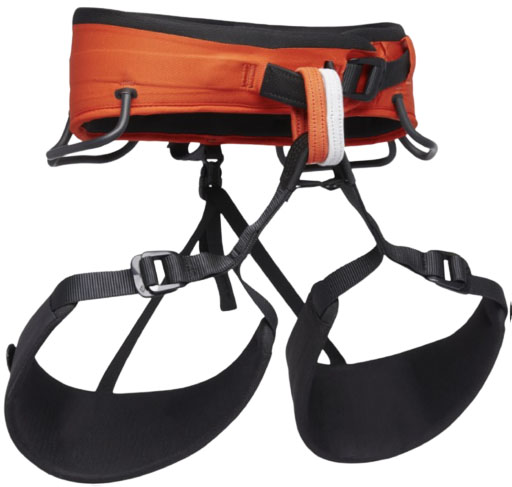
Best use: large wall.
Weight: 1 pound 5.7 ounces.
What we like: One of our most unique climbing products.
What we don’t like: Heavy, bulky and rigid.
The Long Haul, which replaces the Big Gun in the Black Diamond line, is the only harness on this list designed specifically for rock climbing. It weighs 1 pound 5.7 ounces, has a wide padded waistband and adjustable contoured legs with large, durable buckles. While most slings have four sprockets, the Long Haul has seven to accommodate multiple sprockets, straps, trailers, carabiners, boots, water bottles and more. You also get two Daisy Fit liner loops and a Fifi hook, and the easy-release buckles on the back let you sleep comfortably with your belt (and gaiters) on. The shackle is also marked, so you don’t have to worry about losing the writing while high up on the wall.
Despite its size, the Long Haul adapts well to the body, is breathable and offers sufficient freedom of movement. It’s definitely stiffer and less flexible than other tools, including heavy models like the Misty Mountain Cadillac, although it’s lighter and has a bit more padding than the Big Gun above. But while this belt would be a suitable option for big wall climbers, we definitely don’t recommend it for sport climbing or on days when you’re looking to make quick and easy progress in the Alps. And if you want to compare products for climbing, you’ll also want to check out the Metolius Safe Tech Waldo ($150) and Misty Mountain Titan ($210).
12. Edelrid Jay

Best Use: Beginner
Weight: 13 oz.
What we like: Well built and easy to customize.
What we don’t like: It’s not lightweight or foldable.
If you’re looking for a quality adjustable saddle that won’t cost you a lot of money, Jay is a great option. The Jay, or the women’s version called Jayne, is Edelrid’s best harness, ideal for everything from gym sessions and sport climbing to snowboarding and snowboarding. This is one of the most suitable tools in our list. One of our favorite features is the ability to hold it securely and then adjust it so the carabiner is always centered on your body. Additionally, the Jay comes with adjustable leg straps, which many consider to be an important feature. Last but not least, the men’s version is available in three sizes and the women’s version is available in four sizes, so no matter what your body shape is, this belt will be right for you.
Unlike our previous top picks, the Jay is not a lightweight, compact belt, nor does it try to be. While they would never be our first choice when it comes to the Alps, we consider them a noteworthy team. We recently saw a group of students from NOLS (National Outdoor Leadership School) at Smith Rock using the Edelrid – further proof that it is a durable, reliable and versatile option for many climbing disciplines. In their latest update, Edelrid has chosen to build the entire saddle with Blue Design certified materials, giving you the added benefit of purchasing a product made with eco-friendly technology.
13. Metolius Safe Tech All-Around

Best Use: Trad
Weight: 1 pound 4 ounces.
What we like: Safe, durable and extremely comfortable.
What we don’t like: Heavy and bulky for a commercial belt.
The Metolius Safe Tech All-Around differs significantly from our top picks on this list due to its weight. However, if there is a foolproof belt, this is it. Almost all Safe Tech products are designed to withstand a fall load of at least 10 kN, down to the rope attachment strap at the lowest anchor point. No other belt on this list comes close to this level of safety (usually only the attachment points, carabiner and possibly a tension ring are evaluated). The end result is maximum safety, whether you pull or simply fail to belay (which both new and experienced climbers do). Metolius is the only company that produces this type of belt. That’s why we think Safe Tech is worth considering.
14. Mammut Ophir 3 Slide

Best use: beginners
Weight: 13 oz.
What we like: Comfort and breathability at the right price.
What we don’t know: Foam is durable.
Ophir is a durable and versatile belt that offers some additional features and better construction than the other 70 or fewer options on our list. With the folding seat buckle, 4kN pull ring and adjustable leg loops, you’re ready for a variety of climbing adventures, both sport and professional. At the same time, it’s light enough, weighing just 13 ounces, and small enough to be a reliable option for longer, rockier trails. Last but not least, Mammut includes wear indicators so you know when it’s time to run out of leash, which we think is a great addition.
Compared to other budget straps like the aforementioned Momentum and Jay, the Ophir’s design is noticeably thinner in terms of foam. This means more freedom of movement and ventilation, but also less comfort when hanging. Additionally, when worn with standard equipment, the elastic waistband tends to flex slightly under load. But at its entry-level price, the Ophir is a versatile harness especially suited to beginner climbers exploring a variety of disciplines. It’s also available in a four-slide version for $80, which includes two waist buckles for added adjustability and a more customized fit.
15. Black Diamond airNET

Best Use: Athletes
Weight: 8.3 oz.
What we like: Amazingly lightweight and sturdy at just 8.3 ounces.
What we don’t like: Its abstract feature set limits its use for identifying firefighting and mountaineering companies.
Developed in collaboration with expert mountaineer Adam Ondra for his Olympic bid, Black Diamond’s AirNET Harness is an incredibly light yet well-equipped harness. Instead of the traditional split-belt design, Black Diamond opted for patented airNET technology, which uses a simple Dynex mesh to distribute the load. But the weight savings don’t stop there: The Belt also features two streamlined thin-belt sprockets (in addition to the two standard sprockets), slim trailing arms, and a sleek “infinity” ring that reduces bulk. The end result is a durable, comfortable harness that weighs just 8.3 ounces, designed for both competitive climbing and challenging sport climbing.
Compared to the aforementioned ultralight Petzl Sitta, the AirNET weighs about a gram less and costs $30 less, making it a very attractive alternative for experienced mountaineers. But while the Sitta has a variety of uses, from sports to mountaineering, the AirNET is a little more specific with shorter gear loops (not ideal for standard gear carriers) and a thinner outer fabric that offers less abrasion resistance when worn. . Use a parachute or pusher. higher. The cracks are large. But you won’t find a better option designed specifically for burning red dots and corporate events, and the Black Diamond still has durable attachment points and a full-length buckle for easy on and off when finger strength is important.
16. Petzl Corax
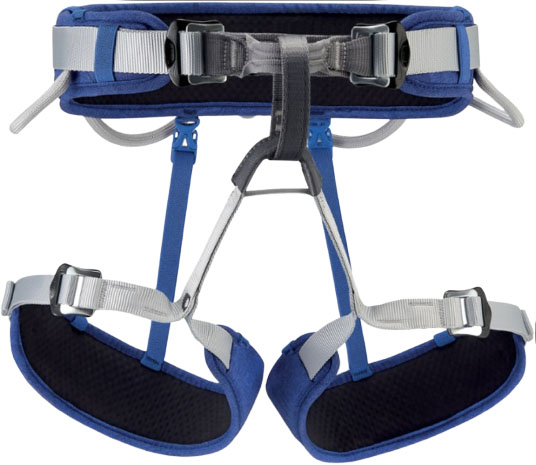
best use: beginners
Weight: 1 lb 0.6 oz.
What we like: Affordable Petzl belt with great adjustability.
What we don’t do: Heavy and bulky.
We’ve grown accustomed to turning to Petzl for the best climbing gear, as evidenced by the Sitta harness above. But for novice climbers or those looking for a comfortable, reliable workhorse, the Corax has a lot to offer. At just $70, it’s very affordable for a Petzl product and competes with entry-level offerings from Black Diamond and Edelrid. But despite the low price, the Corax remains a well-thought-out, high-quality belt. A layer of closed-cell foam over a thick fabric strap distributes weight across the waist and legs, and you get four adjustment points (two at the waist), ice crusher attachments, four large sprockets, and an extra tie-down system. Bow on the back.
Weighing in at over a pound, the Corax is undeniably heavy, which may be a buying criteria for some. In other words, it’s probably not a strap you want to wear in your backpack for long periods of time, but it’ll do just fine in the gym and on the rocks. Additionally, while the padding provides comfort when hanging, it is large enough for walking. But the high waist makes this belt ideal for those who care about fit, whether they have a larger frame, use the belt with multiple partners, or want to wear it in layers. And remember, Petzl offers the Corax LT Lighter (12.2 ounces; $65) with fixed leg loops and a belt clip. If comfort is your top priority, you could also try Petzl’s Aquila ($120), which has similar intentions in premium packaging.
17. Blue Ice Choucas Light
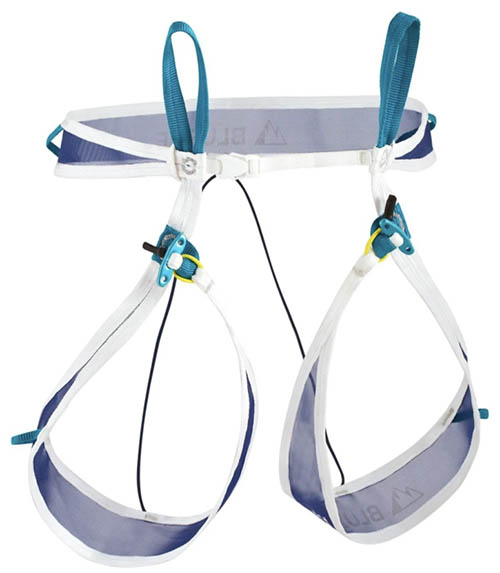
Best use: mountaineering.
Weight: 3.1 oz.
What we like: Very light and compact.
What we don’t like: Very little support and the thin material isn’t very durable.
The tools mentioned above are designed for climbing needs, but climbers and skiers can get by with a simpler design. The idea here is that you may need a harness to climb a glacier, stand on a small icy step or cliff, or rappel several hundred feet, but don’t plan to get stuck in it for long (or completely). ). For this reason, saddles designed for mountaineering or ski mountaineering are light, compact and have an aerodynamic structure that is easy to use. And while they’re not padded for comfort, they’re just as safe as any other option here.
There is no doubt that the Blue Ice Choucas Light is one of the lightest and most compact saddles on the market. Weighing just 3.1 ounces for a size medium, it’s about the same size as the ProBar, but is fully functional with two gear loops, snow screw mounts, and foot loops that detach completely for use on skis. You can definitely choose a more durable climbing harness (like Petzl Altitude or Black Diamond Couloir) that will last a long time and provide more support when suspended. But Choucas Light is an affordable and impressive option for mountain athletes who want the lightest option.
Tips for buying climbing harnesses
The best uses of a climbing belt
Building
soap
split belt
Rings: Gir, Hall, Insurance.
Size and adaptability
Climbing harnesses for men and women.
Weight
Security and ratings
Resistance and durability of your suspensions
Comfort
Price
best uses of a climbing harnesses
The first thing to consider when choosing a climbing harness is the type of climbing you do most often. Any belt from a reputable company should ensure your safety, but whether it’s comfortable and suitable for the job is another question. Do you need large zippers for commercial equipment or ice cutting stations? Adjustable leg loops to accommodate multiple layers of clothing? Extra padding for hanging? Or maybe you need something lightweight and compact for long sets. Our list includes everything from multipurpose gear to gear designed specifically for specific disciplines, including sport and traditional climbing, mountaineering, big wall climbing and mountaineering.
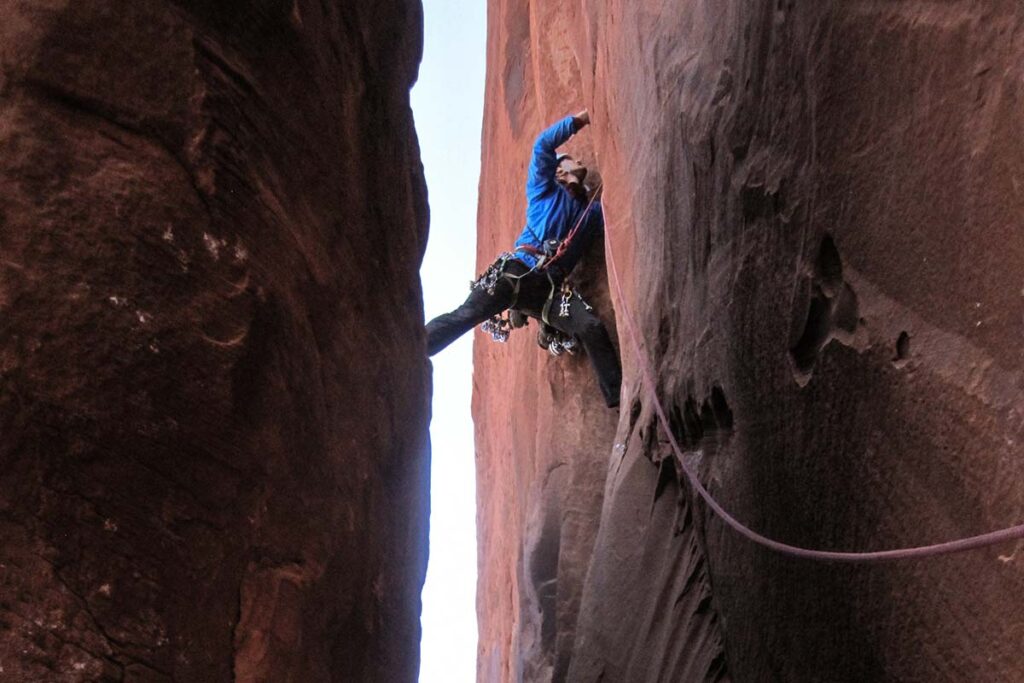
Beginner
In the Beginners category you will find universal belts for beginners. These aren’t the lightest or highest quality models, but they’re a great option for beginners and recreational climbers, whether they’re hitting the gym or bouldering. Entry-level models prioritize comfort and accessibility, including foam padding and multiple adjustments to accommodate climbers of different heights (look for adjustable leg straps). Feature-wise, these straps are pretty basic: You’ll likely get four gear loops and a rear attachment loop, but expect to have no extra features like snowplow slots, extra gear loops, or a nominal tow loop. Ultimately, these models are suitable for indoor climbing, single rope and even multi-rope sports, but we recommend upgrading to one of the higher categories as weight and freedom of movement at altitude become increasingly important. .
Trad Climbing
Beginner climbers can use it at all basic levels, but if you’re breaking routes and getting red burns, you’ll need a more performance-oriented harness that moves with your body and doesn’t weigh you down. . These lightweight models typically feature a streamlined split strap instead of bulky foam, and have minimal adjustments to save weight and allow freedom of movement (we see a lot of fixed leg wraps here, but that’s down to personal preference). . Sport climbing equipment doesn’t have slots to cut ice and you may end up with smaller sprockets since you only have quickdraws and winches. Expect a good fitness tracker to be more expensive than an all-in-one model, with a premium design costing around $200.
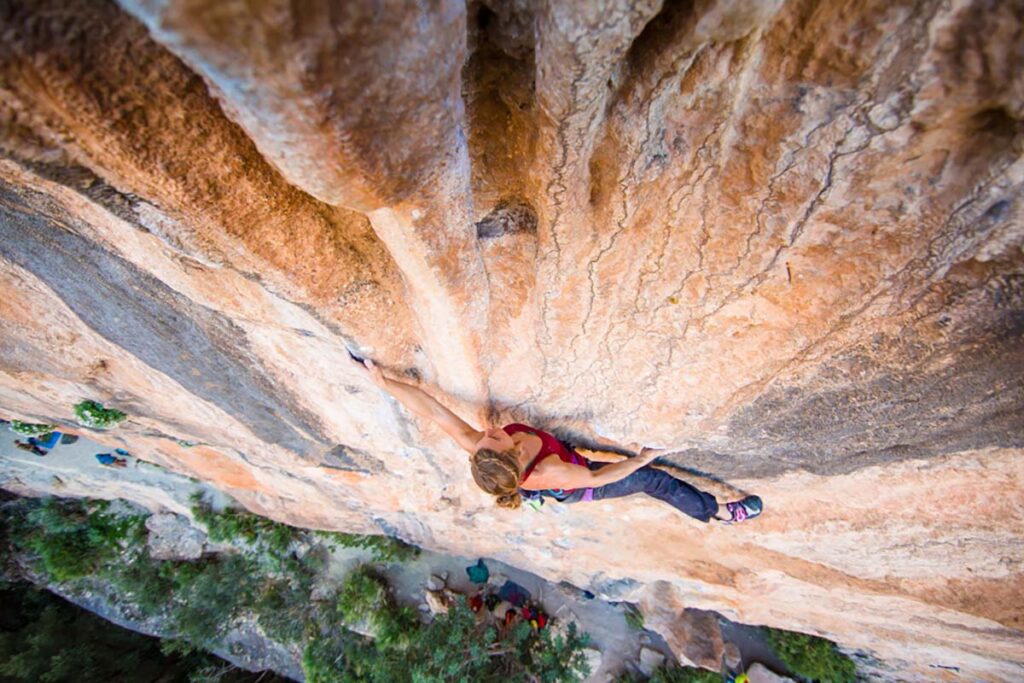
Alpine Climbing
A trading extension often includes multiple offers, so for simplicity we will combine them here. But whether you swing high or aim high, a commercial slingshot is a little more unique than a sport slingshot. First, it needs to be made of stronger material – you will probably have to walk through unsightly beams and ugly chimneys. Secondly, it should be very convenient to hang or half-hang the covers. That means a wide waistband and legs, and the use of foam padding or split jersey (the latter adds a bit to the price). Finally, make sure your standard climbing harness has at least four large gear loops and a rear tow loop. You will need them all.

Big Wall Climbing
A mountaineering harness has many of the same features as a commercial climbing harness, including durable fabrics, large gear loops and pull loops, and a support structure for hanging the harness. Most of these harnesses also come with adjustable leg loops and ice slots, which offer versatility for mixed and ice routes, but aren’t always necessary for summer alpine climbing. Because alpine climbing often involves covering long distances and emphasizing fast, easy movements, most alpine harnesses are designed to be as streamlined as possible and include advanced split harness designs as well as some of the lightest and most leaflets you will find here.
Climb the Great Wall
If you want to hang it on a large wall, like El Cap, you will need a harness that you can wear for a long time. Our large wall mounting straps are the best you can imagine in every way: they are of the highest quality, soft and comfortable for long hanging coverings, nervous service areas and have countless loops for efficient storage. Despite all the protection, there is a loaded tension ring and often two attachment rings for added safety and versatility. It is not fast or manoeuvrable, but it is also not suitable for climbing large walls. When you hang on to your belt all day, nothing else will help.
Climbing
There are two things you shouldn’t do often when climbing a mountain: hanging and falling. If you do both, you probably have more important things to worry about than belt comfort. The climbing harness should be more comfortable when walking than when climbing and should be easy to put on and take off (especially over boots and crampons). Since mountaineering is an intense sport where every gram counts, the belt should be as light as possible. Climbing harnesses are very simple, so their price can be lower than other types of harnesses.
Construction
As climbing has evolved, tools have also evolved. Half a century ago, when climbers rarely descended to fall levels, harnesses were simply “safety equipment.” Simple nylon or swim belts were definitely not designed with comfort in mind. But as sport climbing became more popular and multi-pitch routes took on steeper terrain, climbers placed higher demands on their equipment and the desire for greater comfort became increasingly important. Features foam lining and wider cuffs on the waist and legs. Many harnesses now offer superior comfort and load distribution without much padding and instead use many small pieces of webbing. Today’s best options include a mix of padded and unlined styles. We identify them by the materials used to distribute the load: foam and split straps.
Foam
Many modern belts are made of a single piece of 1-inch thick belt sandwiched between layers of soft foam. This design provides structure and soft support and distributes the load when hanging. The foam is soft and elastic, which is certainly effective, but it also has some disadvantages.
Firstly, foam plastic is bulky and heavy, which is not suitable for those who like lightness, since it is far from the most porous material. However, manufacturers have found some solutions: for example, Edelrid perforates the foam of the Helio and Helia belts and places a breathable mesh on top. Not only is the foam breathable, but it also wears out over time, and if you climb too high, the band will lose its padding before needing to be removed for safety reasons.
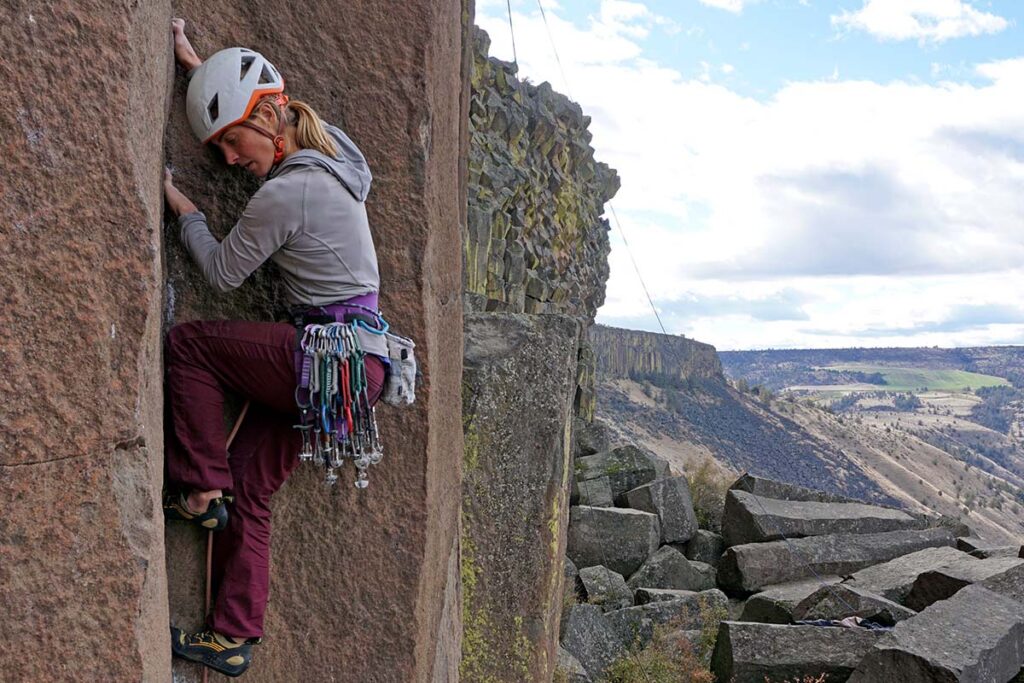
These disadvantages make standard foam harnesses a good choice for beginner climbers or as inexpensive fitness equipment, but we don’t recommend them for anything else. Many foam belts these days use split strap technology instead of a single piece of fabric, which we’ll talk about in more detail below. If you use upholstery foam, we recommend sticking to this combination.
Split Webbing
Arc’teryx was the first company to develop a comfortable, optimized alternative to foam, bringing the modern revolution in lightweight folding saddles. They took a single piece of belt we know from traditional foam belts and split it crosswise, running the threads up and down the waist and legs to distribute the load more evenly. Warp Strength technology, invented by Arc’teryx, completely eliminates pressure points and provides cushioning comfort without the weight and bulk of foam. Other brands have followed suit: Petzl with Wireframe technology, Black Diamond with Fusion Comfort construction, and Mammut with the aptly named Split Webbing technology, which uses a variety of high-strength materials like Spectra, Vectran, and Nylon. And the innovation continues: Black Diamond’s airNET technology, recently introduced on its namesake bracelet, features a Dynex mesh pattern (instead of standard threads).
Gear Loops
Belt loops are small plastic rings that go around your waist. These are places to hang your gear: quickdraws for sport climbing, inner tubes for traditional climbing, rigging, vests, etc. In general, the harder the climb, the more sprockets you need. If you’re primarily a gym climber, you’ll only have two gears available for essential exercises like pull-ups and pull-ups. If you’re a climber or climber, four should be enough, although you’d like to have a brake or fifth gear ring for your boots or gear. If you are climbing a large wall, make sure you have at least four sprockets and a suitable tow ring on the back of the belt.
Haul Loop
Not all belts have or require a tension ring, but many will find it a very useful feature. The loop is attached to the back of the belt between the two rear loops. This is where you attach your tow rope, second rope, or shoes when climbing multiple ropes. Unless you’re climbing a few flights of stairs, we can’t imagine the tow ring will be of much use. Most tow hooks are not designed to withstand falls, so this ring is not suitable for attaching to a rope or anchor, or for hanging particularly heavy objects. However, brake rings are generally designed for larger size belts, such as the Black Diamond Long Haul 12kN ring (see the Safety and Reviews section below for more information on kN).
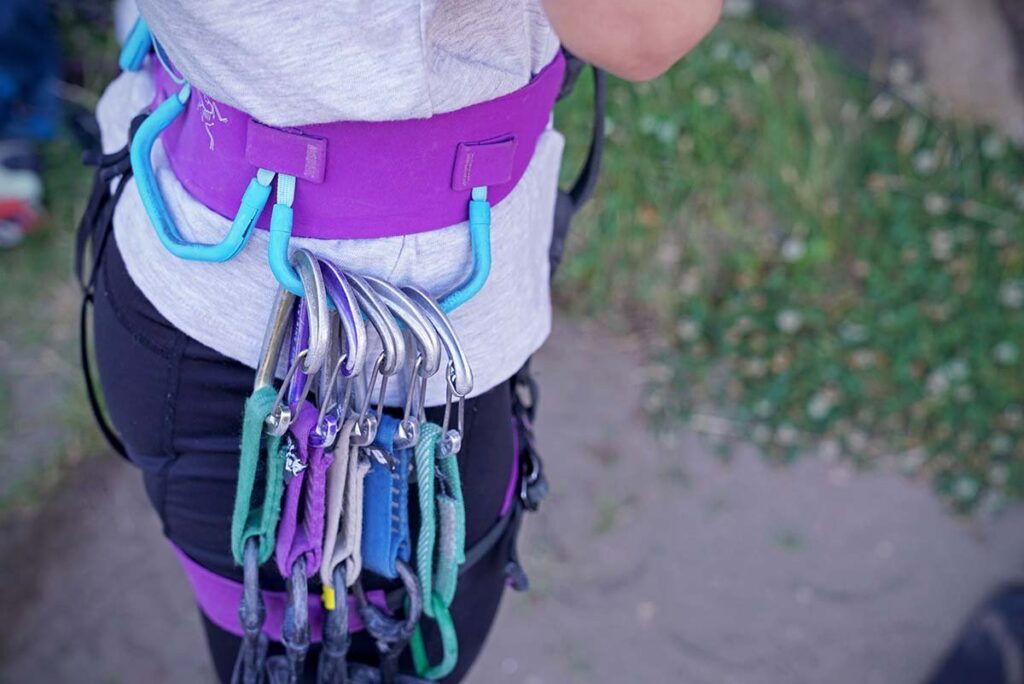
Belay Loop
The attachment loop is quite simple: it is a very resistant fabric loop that connects the belt loop to the legs. This is also the point from which to set up anchoring or landing equipment. If you need a lightweight belt for mountaineering or snow use, consider a thin carabiner. For commercial or large walls, look for a wider sleeve or two sleeves. First of all, check the wear of your carabiner regularly.
Sizing and Adjustability
The correct harness size is just as important as choosing the right harness for the type of climbing you prefer. Unfortunately, it’s not as simple as going to the store and picking out a medium-sized belt, as it’s usually worn over pants. When choosing your size, you need to consider everything from the length of the snap (shorter snaps push your legs up in the crotch area, which is uncomfortable for people with tall hips) to your waist shape and adjustability of the waist and leg. buckle. It is also important to note that not all seat belts come with leg buckles. However, we recommend them for people with strong legs or winter climbers who need the ability to add or remove layers.
Like anything you wear, we recommend trying on the belt before purchasing. Go to the store, put it on, fit it (the waistband should be higher than what you wear in your pants, just above your hips), and hang it up (most climbing shops and gyms have a place for this). If you have the chance, put a few drops on your belt and see how you feel. Remember that the belt does not have to be very tight to fit securely. There should be room for two fingers between your body and the belt or pant legs. All straps are equipped with elastic bands, thanks to which the leg loops fit perfectly on the hips. Some open with small buckles to facilitate access to the toilet, others do not. These straps should be tight enough to hold your legs in place, but not so tight that they restrict movement.
Climbing harnesses for men and women
Speaking of sizing, most saddles now come in men’s and women’s sizes. Bodies come in all shapes and sizes, and it’s not uncommon to see climbers wearing a “female” harness and vice versa. However, please note that the names of these different versions may be confusing. For example, Edelrid’s beginner belt is called Jay (for men) and Jayne (for women) and, even more confusingly, Petzl Adjama and Luna (same belt, both fit). Luckily, Black Diamond has taken it upon itself to simplify these naming schemes: Its budget bracelet is available in men’s and women’s versions, both called Momentum (the women’s model was previously called Primrose). To help you, we’ve linked both options at the top of all our product descriptions.
Weight
Strap weights range from 3.1 ounces for the base Blue Ice Choucas Light model to 23 ounces for Black Diamond’s dedicated Big Wall Long Haul model. Since lighter gear often means better performance, weight is a major concern for many climbers. Sport climbers should look for a setup that is not only lightweight, but also low profile (the last thing they want is a harness that limits their movement). The same goes for climbers and climbers, with more emphasis on weight reduction and compactness. In general, the more you walk or wear the belt, the lighter it should be. But weight isn’t important for everyone: If you’re a gym climber or a recreational climber, you can completely ignore the weight information; You’ll notice a much greater increase in comfort than just a few extra grams on your body. Half.
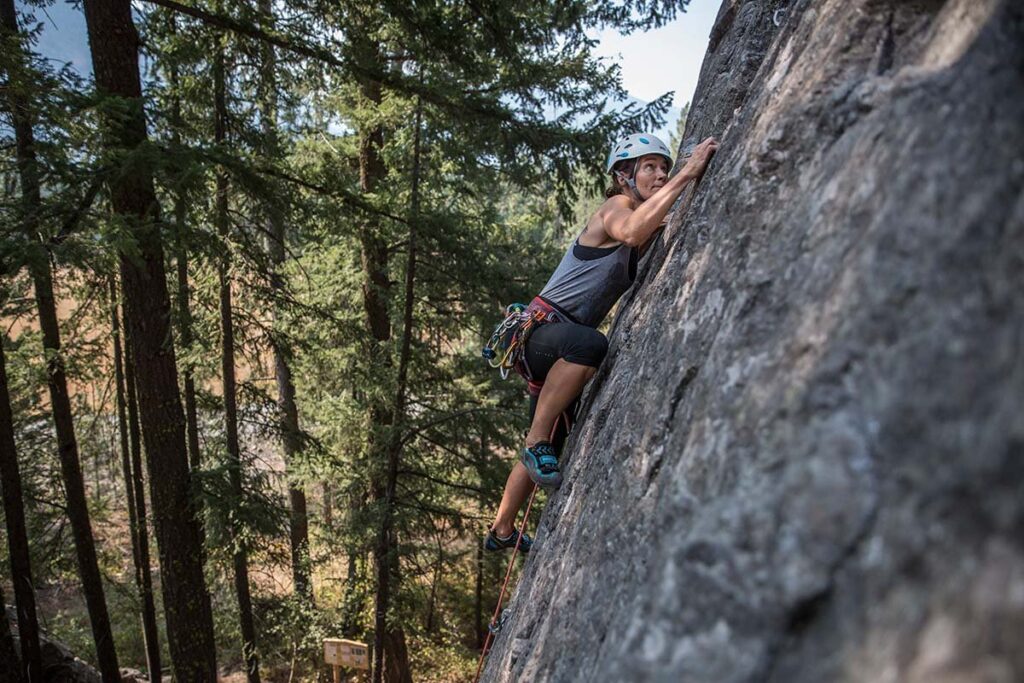
Security and ratings
All climbing equipment that is part of your safety system (e.g. climbing ropes, harnesses, carabiners, cameras, speed limiters, etc.) is certified to withstand a certain force, indicated by a kilonewton value ( kN). ). Without going into too much detail, a nominal force of 1 kN means that the device can support a static weight of approximately 100 kg (or 220 lbs). The weight, represented by kilonewtons, decreases as the force of the fall increases; For example, a fall from a rope puts much more force on the equipment than a steady fall from the top rope. The resistance of climbing equipment, including gear, is usually between 14 and 25 kN.
Climbing harnesses are so strong that their number isn’t as important as knowing which parts of the harness are designed to withstand force and which are not. You can be sure that your lanyard and carabiner attachment points are always fully equipped because this is where you attach your lanyard and webbing. Beyond these primary contact points, it’s best not to rely on other parts of the belt (like the equipment loop or shin loop) for safety. This rare harness comes with a certified tow ring, which is necessary when attached to the leash with a loaded bag. There’s also the Metolius Safe Tech All-Around – it’s safer than any other harness on the market, and all the loops on this harness, including the leg loops, are rated for a minimum force of 10 kN.
Resistance and durability of your suspensions
When it comes to climbing, there are very few things we rely on exclusively. Most things are redundant, meaning there is a backup. Anchors always consist of at least two bolts or prongs. As we drive, we attach a rope to several guards. Many of us secure them with two separate nails or personal fasteners. However, for safety reasons we rely on a rope and strap. This is why, and we can’t stress this enough, it’s so important to make sure your belt works well. Periodically check the mounting ring for looseness or wear. Pay particular attention during this operation. Follow the manufacturer’s instructions for care, maintenance and storage. Discontinue use of the belt when wear ceases or when it reaches the recommended service life, whichever occurs first.
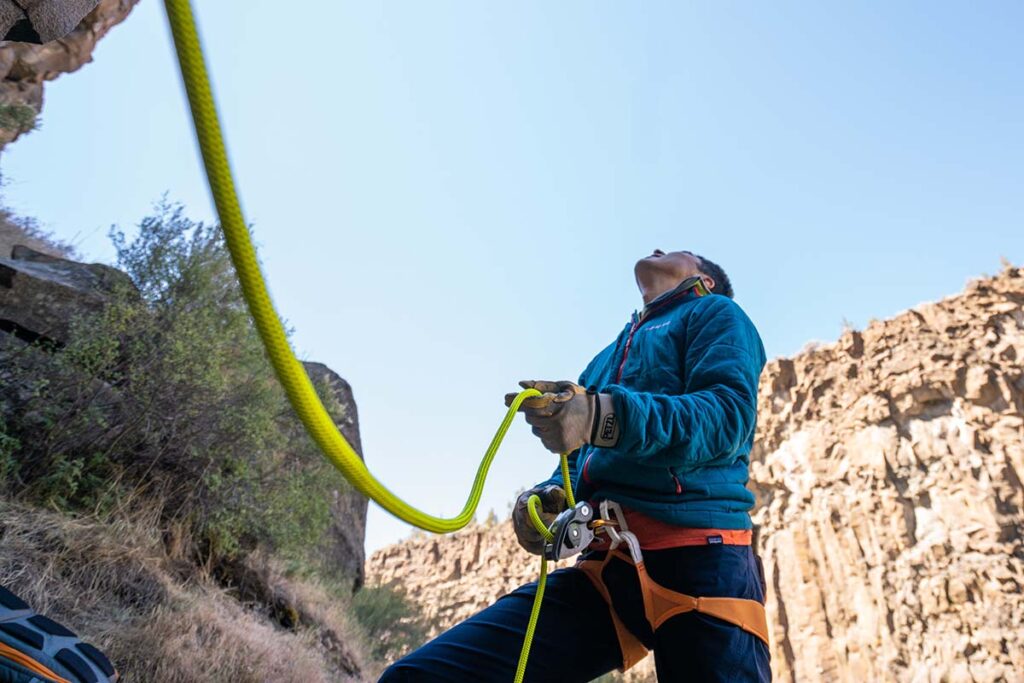
When we talk about durability and climbing harnesses, we often talk more about materials and finishes than absolute safety. The lifespan of a harness depends on the type and thickness of the materials used, as well as the quality of construction and preferred climbing style. Sport climbers don’t have to worry about durability any more than traditional climbers, rock climbers, and big wall climbers, if only because of the nature of the rock contact (think micro-crimping or scraping, slipping, or attachment along the entire climb). surface). place). ). . Day). Fortunately, most commercial or large wall straps take this into account and use stronger fabrics, thicker hooks, and more stitching. For example, the Black Diamond Solutions Guide is made with a more abrasion-resistant outer fabric than the Solution, and a belt like the Misty Mountain Cadillac has oversized buckles and straps.
Comfort
Several features contribute to the comfort of the belt. These include wide cuffs at the waist and legs, generous padding or separation technology, breathable materials and a good fit. In general there is a relationship between comfort and weight: the heavier the belt, the more voluminous and softer the suspension without causing pressure points. As the weight decreases, the padding is removed, the straps and leg loops become thinner and comfort suffers. However, there is an exception to this rule: belts made with Split Belt technology combine the best of both worlds. It’s lightweight and compact, yet distributes the load evenly and incredibly well. These are our top tips for anything other than assisted climbing.
However, suspension comfort is not the only detail to consider. Smaller, lighter, lower profile straps may not be ideal for long straps or hanging (hanging from a rope while on the trail), but they are more comfortable when climbing. We also believe that utilities dominate here. In general, it might be worth considering if you spend more time hitting and hanging than climbing and walking. In the first case, you will need a more durable belt like Metolius Safe Tech All-Around or a high-quality split belt like Arc’teryx AR-395a. For the latter, consider something like the Petzl Sitta or Camp Alpine Flash.
Price
Rather than focusing on style, type of climbing, or materials used, it is sometimes helpful to group climbing equipment by price. Consider entry-level models for gyms and climbers, priced between $50 and $70 (plus special offers on last year’s models). They get the job done, but they’re not the most convenient option for you (especially for leisure). With a price range of $70 to $100, this is a typical mid-range model, with both excellent sport climbers and decent commercial climbers available. We recommend most people stop their search here. Finally, the $100+ category features the best tools for serious climbers. If you buy at this price, you’re probably planning on spending a lot of time with the belt and taking it to some pretty extreme places.


